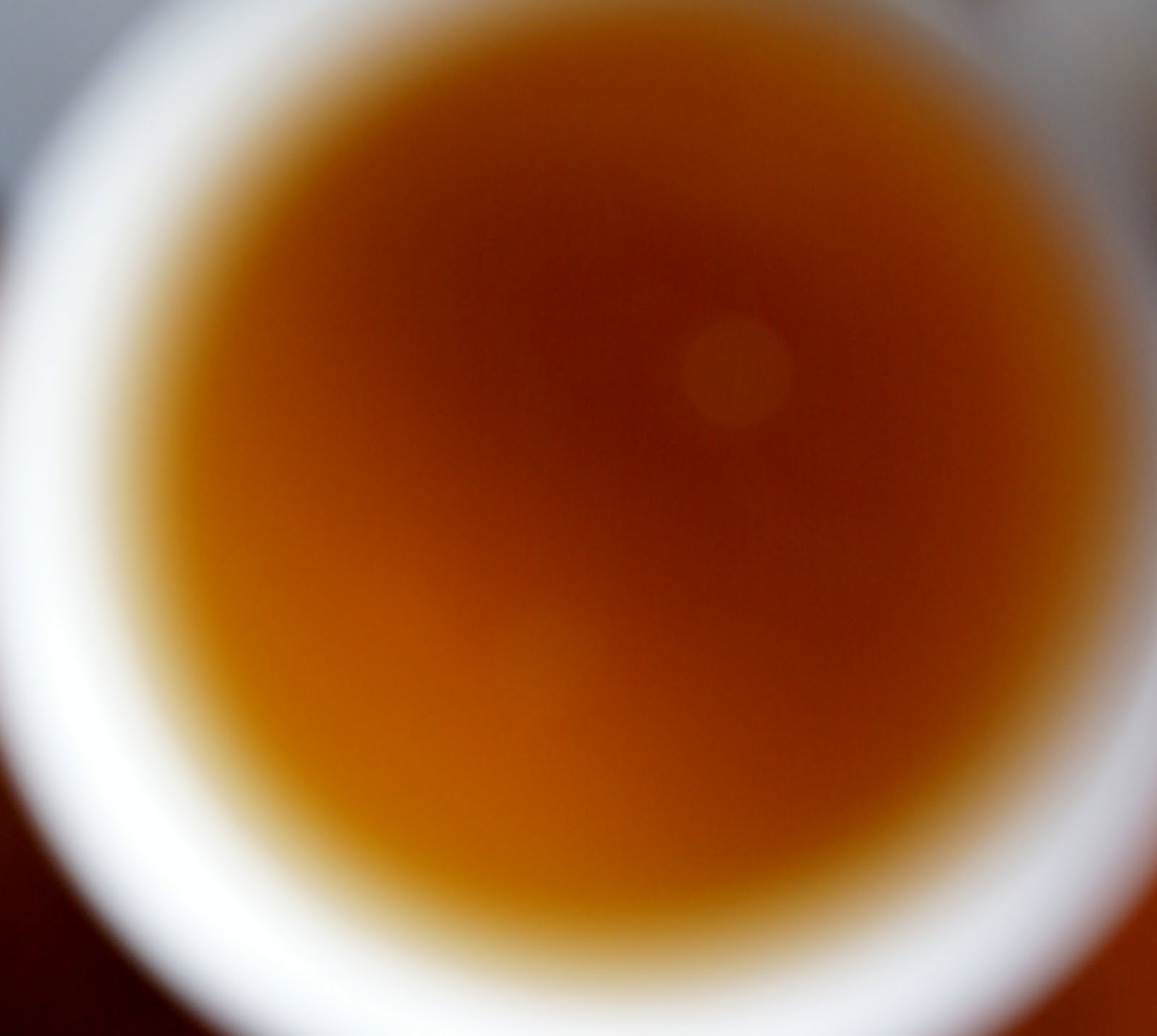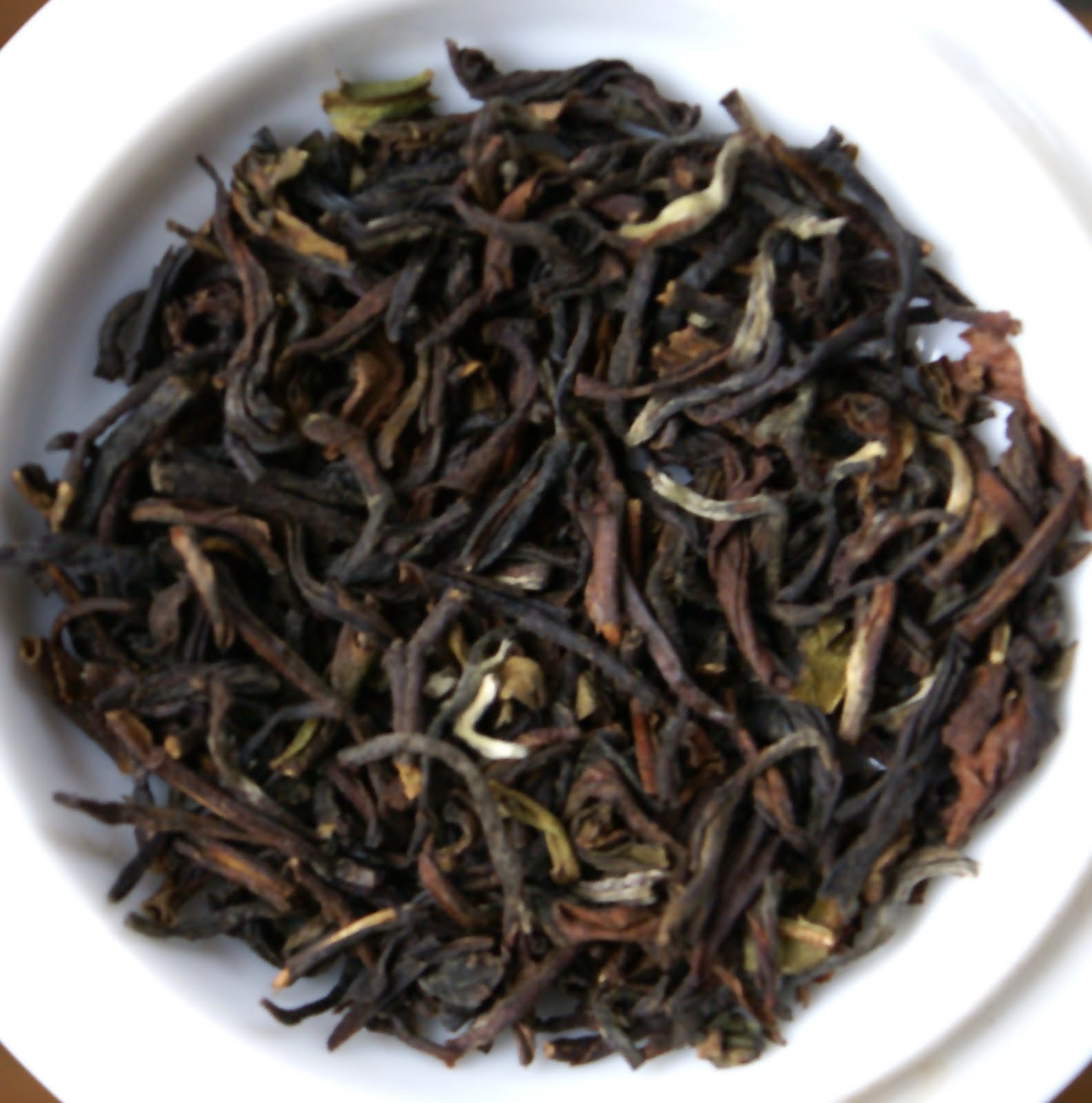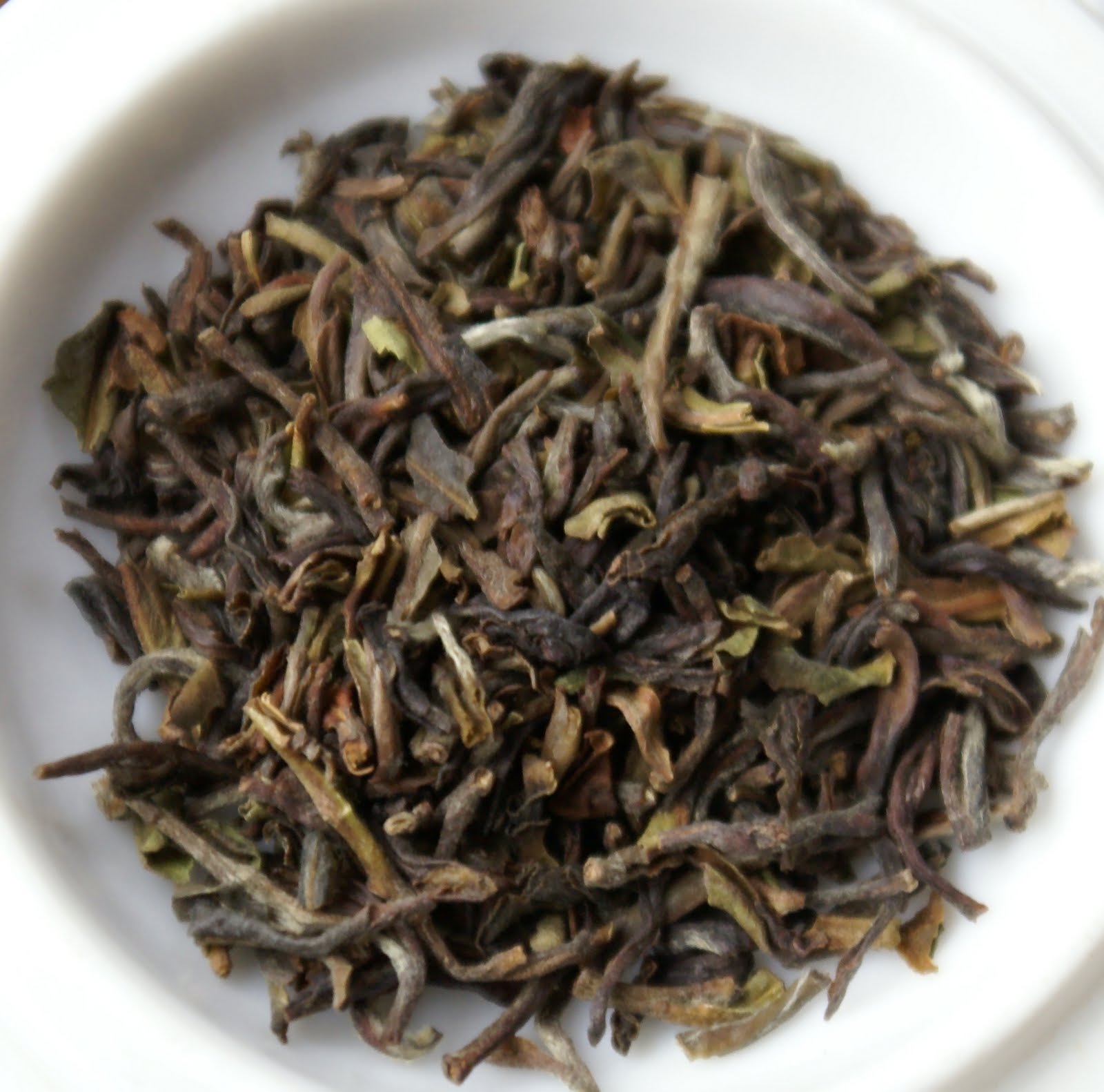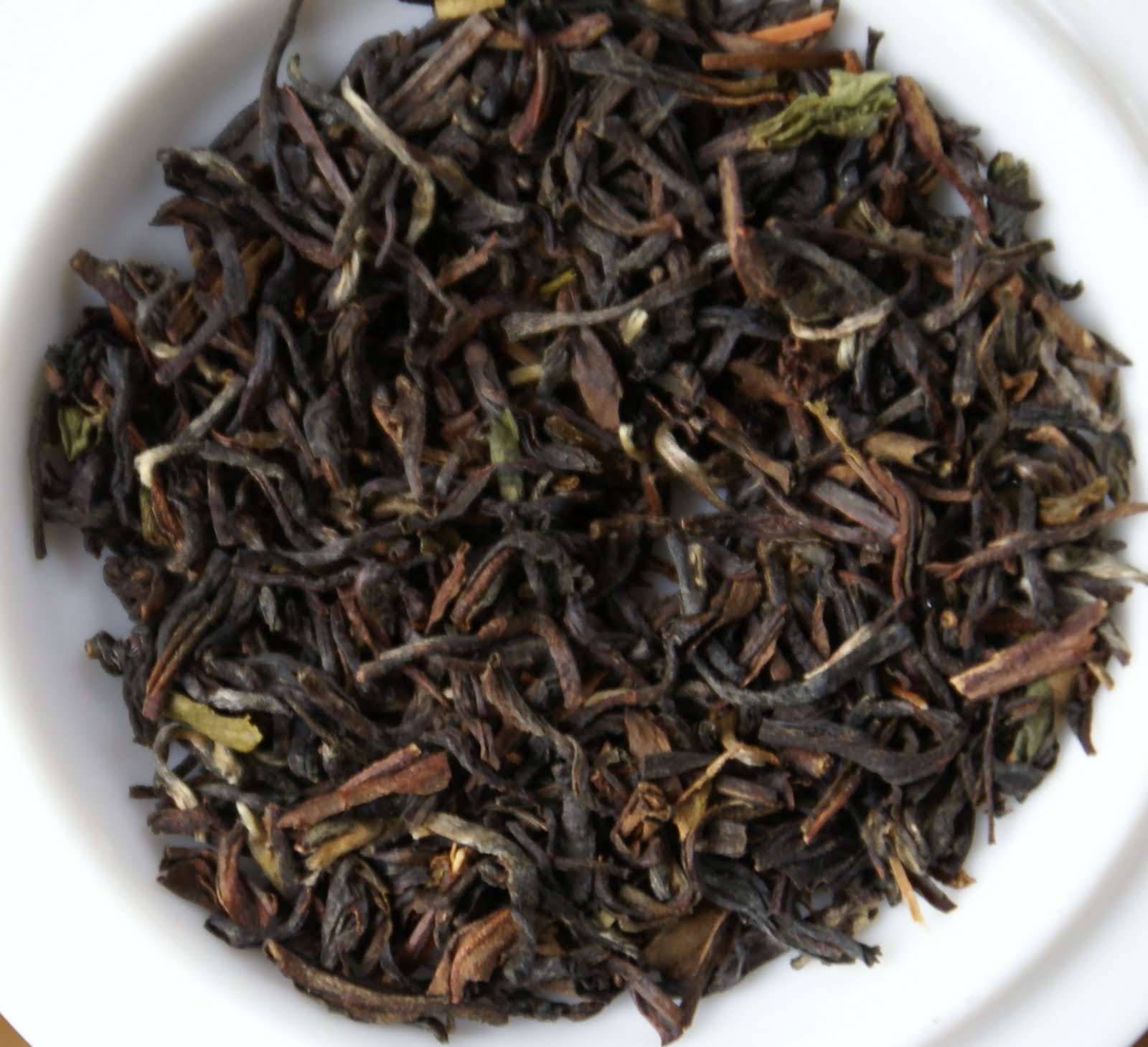Darjeeling 2012
Two fresh 2012 first flush Darjeelings, and a thought about climate change.
Two fresh 2012 first flush Darjeelings, and a thought about climate change.
Wine and tea: they actually have a lot in common. In the second installment of this seminal article I look at the production process of wine and tea and how possibly they can be similar.
The logistic challenges of moving a tea collection.
Let the first flush games begin. I taste my first 2011 Darjeeling.
I continue to drink quite a bit of Darjeeling teas at the moment, at the expense of almost any other black tea. The freshness and juiciness of 2010 Darj first flushes is a good match with the current hot season, and their relative simplicity makes them easier to drink unanalytically than e.g. a rolled oolong from Taiwan or a puer.
The Darjeeling region has around 100 tea estates (see a useful map here). Getting to know their characteristics is perhaps the number one challenge for a Darjeeling tea lover. How does position influence the taste of the teas? Which make consistently good tea throughout the season and which excel in any particular flush? Are the most renowned estates worth their reputation? Who are the emerging players? Enough questions for years of nurturing these fascinating teas.
As I’ve been getting acquainted with a broader range of Darjeeling over the last few years thanks to a regular supply from India, I start getting bit of answers to the above questions. Giddapahar lies high up and makes fragrant teas that are a bit dry in the throat. Jungpana’s tea are always very fruity; Avongrove’s lighter than many. Margaret’s Hope is very good but often no better than teas half the price. Arya, Jungpana, Puttabong are big over-deliverers; Okayti I tend to see as a solid second-league player. The nurturing continues.
 |
| As often with Castleton and is highish-oxidation teas, the colour of this FF is darkish. |
Today’s 2010 ‘Moonlight’ First Flush (invoice no. Ex-1, available from Tea Emporium for $27 / 100g) from the estate of Castleton provides another quantum of data for that broader picture. A well-sorted grade with small olive green and light beige leaves, it infused a rather pale tea that needs a slightly longer steep to gain much intensity. This tea has good fruit and a balanced body but is not terribly expressive. It lacks the extra layer of spicy complexity of a good first flush Jungpana, and lacks the miraculous touch of plant sap ultrafreshness of the 2010 Puttabong Queen I reviewed here. It is, as all Castleton teas, structured and wholesome but a little conservative, and never the most marking of Darjeelings. It’s a great drinking tea so to speak, but less great as a tasting tea. (In fairness, Castleton is more renowned for its second flush teas, though my feelings about them are similar).
But the best way to brew this tea in my opinion is a flash brew with just boiled water. Generous dosage and 30 seconds give a lighter colour in the cup, a fruitier, more lifted profile but more emphasis on that inimitable Darjeeling juiciness that’s like biting into a freshly picked golden apple. It’s a fantastic feeling of freshness that is well worth the asking price of $21 / 100g.
As the first 2010 flush for Darjeeling tea is approaching, it seems fitting to summarise my feelings about 2009’s last, autumn flush. Autumn Darjeeling tea rarely gets any hype, and the tea lover’s attention usually focuses on first or second. I enjoy the former’s finesse and crispness, and the latter’s complexity and full-flavoured summer fruitiness, but I like the autumn teas quite a bit. With their herby, earthy depth and stronger oxidation, they often feel a bit more serious and no-nonsense than the summer flush where the sweet muscatel flavour can get rather repetitive. That’s my feeling, at least.
In any case I’ve enjoyed these eight teas that were sourced from online tea merchant Thunderbolt. Benoy Thapa is doing some great job on the internet including the very comprehensive company website as well as an informative blog and good activity on Facebook. Benoy also provided some exacting tasting notes on all these teas (click on the links to see these, and the excellent photos), so I’ll merely share my personal impressions.
All teas were brewed several times including competition style (2g / 100ml) and large glass pot (250–300 ml with dosage ranging from 2.5 to 5g).
[photo above] A well presented long twisted leaf, moderate fragmentation by Darjeeling standards. Dark brown leaves, modestly tippy. Aroma of dried herbs with an almost caramelly, milk-chocolatey sweetness. Glass-brewed with 4g, 2m30s: A peculiar tea, on the high end of oxidation, a little earthy, with autumnal, unsweet, not-too-fruity substance. But has a roundness and dimension of whole(ish)-leaf Darj that’s inimitable. Moderate colour and medium body; astringency is virtually non-existent. I actually liked this brewed lighter on less leaf, when it reaches a rounder, more almondy, less earthy expression: a round, soft, very balanced tea. This is very good not great, and although one of the pricier teas from this batch it’s actually fairly honest at $14 / 100g.
[photo above] Standard machine-processed fragmented Darj leaf, not tippy but with a few unoxidised greenish leaf bits. Aroma is perhaps more nutty and chestnutty than usual. Warmed leaf is bready, sweet, less herby. Brewed leaf is rather green; some proportion of twigs. Brewed in glass pot (4g/250ml) this has a medium beige colour, a mild, fleshy, vaguely muscatelish aroma that is simple but good, and a mild balanced flavour with no special merits but pretty good quality for its fragmented leaf. On the finish there is a hint of dryness, atypically for my brewing regime. In fact it’s easy to overbrew, though even when quite bitter and drying on the finish it generates a sweet yun sensation. In a word this has a bit more guts than others autumn flushes, and is very good indeed, especially at $7.
[photo above] A very conservative fragmented leaf grade, negligible tips, generic black tea & brown bag aroma. This is a bit less exciting to look at than other teas on this tasting. Brew has a nice colour, not too dark. A little summer-flushy in character with a ripe red fruitiness of red apples. Just some grip on end, even with a longish brewing. No muscatel: mostly baked apples and nuts. This is wholesome but a little generic and while not a pain at $7 / 100g, lacks a bit of personality to me.
[photo above] Similar grade but even less distinctive than the Castleton TPY CL above, smaller and brownier leaf. However in the cup it is a different animal. You can push this quite far, the colour is not very dark and profile is better than expected. A light-bodied, grapey, sweet-fruity muscatelish style, broad and full on the palate (these characteristics are emphasises in a longer brew) but untannic, and even the autumnal herby character is very low. The fruit character and the suggestive muscatel note are really appetizing. Very good tea, and a bargain at $5.
This, together with the Margaret’s Hope tea below, is quite different from the other teas in this batch in consisting of very well-handled large, wholish hand-processed leaf vaguely resembling a baimudan white tea, including silvery tips, brownish thin huangpian flakes, relatively few stems. The aroma is very herby and bergamottey, with a sweeter baked bread scent when leaves are warmed. Expired leaves are consistently green and rather thin, plantation-like.
Logically this brews a lightish peachy colour that is only mildly black-tea scented. Flavour is light and fruity (apples, peaches) with no astringency and a touch of roundness, but also citrusy and bone-dry with good length. This is very well-presented leaf-and-bud quality, what Darjeeling should be doing more often to compare more favourably with the best Chinese blacks, but rarely does. Short of greatness but very enjoyable and more than fairly priced at $10 / 100g.
[photo above and below] A variation on the above, but an even more impressive whole leaf grade, mixing white tips, some oxidised leaves, and quite a few flat unrolled greenish ‘flakes’. Aroma is faint, bergamottey, slightly reinforced into bready bake with warmth. Brewed competition style: A surprisingly light colour! (Although oxidising into a medium beige quite quickly in the cup). Aroma is faint, a bit oxidative / black tea-like. Clean, appley attack with succulent fruit. This is kept light but a black tea not an oolong, uncomplex and not so very fruity but has some impressive yun sweetness on the finish. Also some lovely spiciness. Really a delicious expression of Darjeeling. There’s another pleasant if less full and precise brewing behind.
This is even more outstanding in a large pot (4g / 250+ml), with lovely transparency of flavour and again that Darjeeling typicity without extraction and astringency. This is one tea that I would like to try with a high dosage in clay pot, like a Wuyi oolong. $16 / 100g: expensive by regional standards but more than fair for the quality. ($16 would buy you a very average Wuyi oolong).
[photo above] True to their ‘Wiry’ name, leaves have an elongated straight aspect; small and fragmented. Quite some twigs, no tips. Not an exhilarating grade. Brewed leaf fragments are very small, uniformly brown, reminiscent of some gongfu grade Qimens or black Yunnans. Medium+ beige, a lighter colour than expected. A balanced cup with a nutty, typically autumnal character and just minor grip on end. But uncomplex and ultimately a little simplistic. Better balance in a larger pot, with the tannins kept at bay. This surely on the more oxidised end of the spectrum, with a somewhat malty, chewy character vaguely reminiscent of an Assam, but brewed light this can be kept at bay, though at the expense of complexity. This is good tea, but not quite my style. $7.
[photo above and below] Small leaves, minor tips, intense aroma. A reasonably good grade, but not that makes me ‘wonder’. Brewed light with 90s, a moderate brown-reddish colour and again a rather intense aroma of dried fruits and apple pie. The oxidation is very balanced and the dry, herby aromas of autumn flush are underpinned by an almost second-flushy fruit exuberance: apples, raisins, plums. This is definitely good, and showing that Darjeeling needn’t be a whole-leaf extravagance like the Margaret’s Hope above to deliver superior character. The only criticism is that this Clonal Wonder is a bit uncomplex. Especially when left too long in the cup or the decanting jug, when it loses its fruity breadth and becomes quite tannic, though not astringent. Through several brewing attempts I came to the conclusion that large pot and short steeps work best. If brewed stronger, this remains rather simple and becomes overtannic for my tastes, with muted fruit and a rather ordinary profile. Good value at $8.
The 1st Flush SFTGFOP1 ($3 / 100g from Lochan Tea; bottom leaves in the photo above and below) shows a contradiction between the visual aspect and the actual flavour. The dry leaf, wet leaf and brewed tea colour are announcing a fairly light tea: leaves are green, brew is apricotty-orange, while this tea actually packs in quite a bit of punch, with a bitterish, dry finish. The chewiness and murkiness are also signs of high oxidation. This however remains clean, with good intensity and not without interest but lacks the precision and distinctiveness of the best 2009 1st flushes.
 The 2nd flush Imperial Muscatel is well-presented with largish leaves and few tips; it has a very exciting scent of milk chocolate and other complex notes of herbs and dried fruits. Reasonably deep-coloured, it is all about harmony and complexity. It exudes a sense of calmness, depth and dimension. The tannins are very fused into a broad, almost mellow whole, although the tea by no means light. There’s a ripe, summery sense of second-flushness to this, quite different to the herby drive of the above FF. The empty cup aroma is especially noteworthy: summery, warm, spicy. (The famous muscatel scent escapes me here, though).
The 2nd flush Imperial Muscatel is well-presented with largish leaves and few tips; it has a very exciting scent of milk chocolate and other complex notes of herbs and dried fruits. Reasonably deep-coloured, it is all about harmony and complexity. It exudes a sense of calmness, depth and dimension. The tannins are very fused into a broad, almost mellow whole, although the tea by no means light. There’s a ripe, summery sense of second-flushness to this, quite different to the herby drive of the above FF. The empty cup aroma is especially noteworthy: summery, warm, spicy. (The famous muscatel scent escapes me here, though).  Another 2nd flush is the FTGFOP1 Clonal. This one is fairly light, as preannounced by the leaf which is greener and tippier than even the FF here, with an intense smokey-bergamottey aroma. The cup is light-coloured (see photo at top of page, second bottom), peachy-amber in colour, with an exciting if short-lived aroma of fresh leaves, mown grass, freshly polished wood, with subsidiary notes of fresh summer fruits (peaches). Astringency is there, ending the palate progression in a crescendo. A nice tea, much more first than second flush in character, and if not compared to the vastly superior Imperial Muscatel above, really quite good.
Another 2nd flush is the FTGFOP1 Clonal. This one is fairly light, as preannounced by the leaf which is greener and tippier than even the FF here, with an intense smokey-bergamottey aroma. The cup is light-coloured (see photo at top of page, second bottom), peachy-amber in colour, with an exciting if short-lived aroma of fresh leaves, mown grass, freshly polished wood, with subsidiary notes of fresh summer fruits (peaches). Astringency is there, ending the palate progression in a crescendo. A nice tea, much more first than second flush in character, and if not compared to the vastly superior Imperial Muscatel above, really quite good.  The Autumn Delight is, obviously, from the autumn flush. After two remarkable and one very good tea this one is only good. A standard Darjeeling smallish leaf with some lighter brown hues to the whole but few tips, it boasts a lovely dry leaf aroma: more humid and fresh than the second flushes, gloriously intense fresh wood and walnut notes. The infusion starts with intense fruitiness (candied fruits: mango, cherries), mild spice, good concentration but little in the way of tannins. I like the balance and the feeling of effortless quality that is usual with Jungpana but it’s the least immediately engaging of their 2009 releases: it’s rather simple and one-dimensional. After the dry leaf aroma the biggest moment of interest is in the finish which is poignantly hazelnutty. Representative of an autumnal flush in being less generous, more bone-dry, less fruity than a second flush.
The Autumn Delight is, obviously, from the autumn flush. After two remarkable and one very good tea this one is only good. A standard Darjeeling smallish leaf with some lighter brown hues to the whole but few tips, it boasts a lovely dry leaf aroma: more humid and fresh than the second flushes, gloriously intense fresh wood and walnut notes. The infusion starts with intense fruitiness (candied fruits: mango, cherries), mild spice, good concentration but little in the way of tannins. I like the balance and the feeling of effortless quality that is usual with Jungpana but it’s the least immediately engaging of their 2009 releases: it’s rather simple and one-dimensional. After the dry leaf aroma the biggest moment of interest is in the finish which is poignantly hazelnutty. Representative of an autumnal flush in being less generous, more bone-dry, less fruity than a second flush.